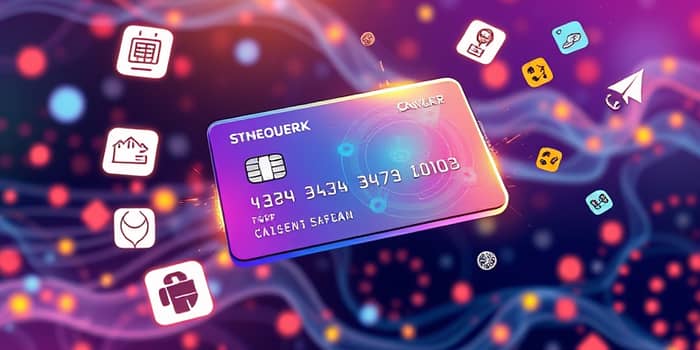In an era defined by digital transformation and data-driven decision-making, smart cards that categorize spending automatically are revolutionizing how individuals and organizations manage their finances. By leveraging embedded chip technology, artificial intelligence, and seamless integrations, these cards offer a compelling blend of security, convenience, and insight. This article explores the technology behind auto-categorization, its practical applications, the measurable benefits, and a forward-looking view of where this innovation is headed.
With the proliferation of online transactions, mobile payments, and remote work, manual expense reporting has become increasingly untenable. Smart cards offer a powerful solution, shifting the burden of categorization and reconciliation away from end users and finance teams toward automated, AI-driven platforms. The result is a streamlined process that saves time, reduces errors, and provides actionable insights in real time.
Definition and Technology
At their core, smart cards are payment cards embedded with microprocessor chips that can securely process data. These chips enable both contact (chip & PIN) and contactless (NFC, RFID) transactions, elevating security beyond traditional magnetic stripe cards. Modern implementations combine on-card encryption with cloud-based analytics, allowing each transaction to be securely recorded with end-to-end data protection.
On the software side, AI and machine learning models analyze transaction details—date, amount, merchant—and autonomously map each expense to predefined categories such as dining, travel, or utilities. Over time, these systems refine their accuracy by learning from corrections, custom rules, and real-world spending patterns. The synergy of hardware and AI ensures that transactions are categorized within seconds, eliminating the need for manual sorting.
Core Feature: Auto-Categorization of Spending
The standout capability of these smart cards is their ability to classify expenses automatically. As soon as a transaction is authorized, the system:
- Identifies merchant and transaction context using AI-driven algorithms
- Assigns expenses into intuitive categories such as dining, travel, utilities, and office supplies
- Flags unusual or out-of-policy transactions for immediate review
This automated pipeline not only accelerates reconciliation but also provides real-time reimbursement and expense reconciliation for employees and finance teams alike. By detecting recurring charges and anomalous patterns, the platform offers a proactive approach to financial oversight.
Business and Consumer Use Cases
Smart cards are no longer a niche technology; they’re a cornerstone for modern expense management across various sectors. Key scenarios include:
- Corporate expense automation: Companies issue corporate smart cards to employees, eliminating paper receipts and manual expense reports. Auto-matching of receipts to transactions ensures full audit trails.
- Fuel and fleet management: Integrated GPS-enabled fuel cards automatically categorize transactions and enforce fuel purchase policies at the point of sale, preventing misuse and simplifying accounting.
- Personal finance: Consumers gain insight into spending habits by viewing categorized expenses in mobile apps, enabling better budgeting and financial planning.
These use cases underscore how smart cards enhance productivity by eliminating manual sorting and reconciliation, while providing robust controls to curtail unauthorized spending.
Integrations and Security
Seamless integration with popular accounting systems such as QuickBooks, Xero, and NetSuite ensures that expense data flows directly into ledgers without manual intervention. This tight coupling reduces reconciliation cycles from days to minutes and supports custom mapping rules to fit existing chart of accounts structures.
Security remains paramount. Smart card solutions implement multi-layered defenses, including chip-based encryption, tokenization, secure cloud storage, and role-based access controls. Users and finance administrators can configure permissions to restrict card usage by merchant category, transaction amount, or geographic location, further bolstering policy enforcement.
Impact Numbers and Efficiency Gains
The quantitative benefits of auto-categorization are striking:
By automating expense categorization, businesses can reclaim countless work hours and reallocate resources toward strategic initiatives. For fleet managers, the reduction in fraud and policy violations can translate into substantial cost avoidance and improved operational transparency.
Value Proposition and Benefits
Smart cards that categorize spending automatically deliver a multitude of advantages:
- Significant time savings and increased accuracy—no more manual data entry or delayed expense reports.
- Enhanced visibility into spending patterns, enabling better budgeting, forecasting, and decision-making.
- Built-in policy enforcement and audit trails to minimize fraud and non-compliance risks.
- Scalable solutions for organizations of all sizes, from startups to global enterprises.
For individuals, the seamless categorization empowers better financial habits by providing clear, automatic insights. For finance teams, the tools facilitate simplifying complex financial processes and delivering reports with unprecedented speed and reliability.
Recent Trends and Future Outlook
Since 2020, adoption of auto-categorization has grown exponentially as remote work and digital payments have surged. Vendors continue to refine AI models, expanding category granularity and predictive analytics capabilities. Future enhancements may include voice-activated controls, biometric authentication, and deeper integration with enterprise resource planning systems.
The scope of smart cards is also broadening beyond finance. In healthcare, identity management, and digital access, similar chip-based cards are enabling secure, streamlined user experiences. As AI algorithms advance, we can expect even higher levels of automation, context-aware categorization, and intelligent expense recommendations.
Key Vendors and Products
Leading platforms in the auto-categorization space include:
- ReceiptsAI: Cloud-native AI-driven categorization with one-click exports.
- Ramp: End-to-end expense management featuring real-time policy enforcement.
- Corpay and Navan: Comprehensive integrations and digital receipt matching.
- Fuel and fleet card providers offering GPS-linked controls and analytics.
Conclusion
As businesses and consumers strive for greater efficiency and transparency, smart cards that categorize spending automatically emerge as a transformative tool. By combining secure chip-based payments, AI-driven categorization, and seamless integrations, these solutions eliminate tedious manual tasks and unlock powerful financial insights.
Whether you are an entrepreneur seeking tighter expense controls, a finance team aiming to accelerate reconciliation, or an individual looking to understand your spending habits, smart card technology offers a clear path forward. Embracing this innovation means reclaiming valuable time, reducing errors, and empowering data-driven decisions, setting the stage for a more agile and financially resilient future.
References
- https://receiptsai.com/tools/credit-card-statement-categorizer
- https://navan.com/blog/insights-trends/what-is-a-smart-corporate-card
- https://www.g2.com/categories/expense-management/f/smart-categorization
- https://ramp.com/blog/smart-cards-101
- https://www.servicebusinessmastery.com/how-smart-cards-are-revolutionizing-fleet-management-with-daniel-simon/
- https://levelblue.com/blogs/security-essentials/how-smart-cards-work
- https://www.corpay.com/commercial-cards/expense-management










